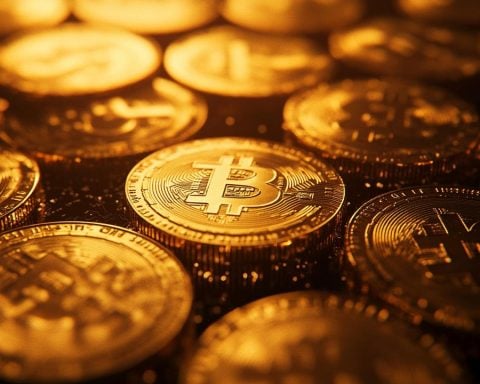In a surprising turn of events, the financial landscape is witnessing a notable increase in interest towards XRP, an asset that has been under significant scrutiny in recent times. This surge comes as Gary Gensler, the chair of the Securities and Exchange Commission (SEC), is set to step down from his position.
Investors Rally Around XRP
XRP, a prominent digital asset, has faced numerous challenges under Gensler’s tenure, with the SEC imposing stringent measures on its operations. Despite these hurdles, or perhaps because of them, investors are now gravitating towards XRP in substantial numbers.
This renewed interest can be attributed to the anticipation of regulatory shifts that might follow Gensler’s departure. Market participants are optimistic that the next leadership might ease the pressures that XRP has faced, offering a more favourable regulatory environment.
A New Chapter for the SEC
Gensler’s exit signals a potential turning point for the SEC’s approach to cryptocurrency regulation. As the industry braces for what the future holds, the market’s response to XRP suggests a hopeful outlook among investors. They seem to be betting on the possibility of a regulatory landscape that is more conducive to digital asset growth.
The Road Ahead
While the SEC prepares for this leadership transition, the crypto community is watching closely. The increasing interest in XRP highlights how market dynamics can rapidly evolve in response to changes in regulatory leadership. As new policies unfold, the trajectory of XRP and similar assets will be pivotal in shaping the future of the digital economy.
What You Didn’t Know About XRP’s Surprising Rebound Amid SEC Leadership Changes
XRP’s Economic Impact on Communities Worldwide
As the digital asset XRP gains renewed attention, it’s crucial to understand its broader impact on economies and communities beyond just market speculation. XRP’s main advantage is its ability to facilitate faster and cheaper cross-border transactions compared to traditional financial systems. This has far-reaching implications, particularly for developing nations and underserved communities that rely on remittances.
The Global Ripple Effect
One of the interesting facts about XRP is its role in financial inclusion. In countries where traditional banking infrastructure is lacking or expensive, XRP provides an alternative for transferring money efficiently. This capability can stimulate local economies by allowing businesses to engage in international markets and enabling families to receive funds from relatives abroad with minimal transaction costs.
Are Cryptocurrencies Like XRP the Future of Finance?
The question many are asking is whether cryptocurrencies like XRP represent the future of finance. On one hand, they offer unparalleled efficiency and lower fees. On the other, they come with risks such as volatility and regulatory uncertainty. Historically, markets governed mainly by speculation can lead to financial instability; however, the potential for revolutionising traditional finance remains alluring.
Advantages and Disadvantages of XRP’s Rising Popularity
The main advantage of XRP’s growing interest is the potential for inclusivity. By making financial services more accessible, there’s an opportunity to reduce poverty and foster economic growth. However, a disadvantage is the regulatory ambiguity that can confuse markets and deter institutional investors. The transition in SEC leadership provides a window to possibly redefine these frameworks, making them more crypto-friendly.
Controversies and Concerns
Despite its promising aspects, XRP has been a source of controversy, primarily due to its legal battles with the SEC. These legal challenges question whether XRP should be classified as a security, affecting how it is regulated and traded. This controversy casts a shadow over its market potential, as investors seek clarity and stability.
What’s Next for XRP and Cryptocurrencies?
As XRP’s market evolves, the next chapter in cryptocurrency regulation could be pivotal. Will the new SEC leadership usher in a more pragmatic approach to digital assets? Investors are hopeful, but only time will tell how these regulatory shifts will play out. It’s critical for market participants to stay informed and for regulators to balance innovation with protective measures.
For those interested in diving deeper into the world of cryptocurrencies or the ongoing developments in digital finance regulation, visiting reputable sources such as CoinDesk, CCN, and Forbes can offer valuable insights and updates.

















